Just so you know, this post contains affiliate links. If you book a tour, hotel, or buy something through one of these links, I may earn a small commission—at no extra cost to you. It helps me keep this blog running and full of travel tips. Thanks for the support!
Buckle up, travellers, we’re going on the Vietnam overnight trains! Get ready to embark on an exhilarating journey from the hustle and bustle of Hanoi to the picturesque landscapes of Da Nang. These luxury overnight trains in Vietnam offer a unique and thrilling way to experience all that Vietnam has to offer, and are an essential part of linking your central Vietnam itinerary to Hanoi in the north or Ho Chi Minh City in the south. There’s two types of train – Vietnam Railway carriages and Private Carriages, and choosing the right one will massively impact how much you enjoy your journey. So grab this guide and your backpacks, pack your sense of adventure, and get ready for a ride you won’t soon forget!
Key takeaways for Vietnam Sleeper Trains
- Book Early: Tickets sell out fast, especially for luxury overnight trains and on the Sapa routes.
- Research: Find the right mix of value and luxury for your budget by researching private companies.
- Go for a Bottom Bunk: More convenient and spacious.
- Bring Your Own Snacks: Food options onboard can be limited.
- Keep Valuables Close: Lock your bag and keep essentials in bed with you.
- Prepare for Noise: Trains are bumpy and loud—earplugs are a must!
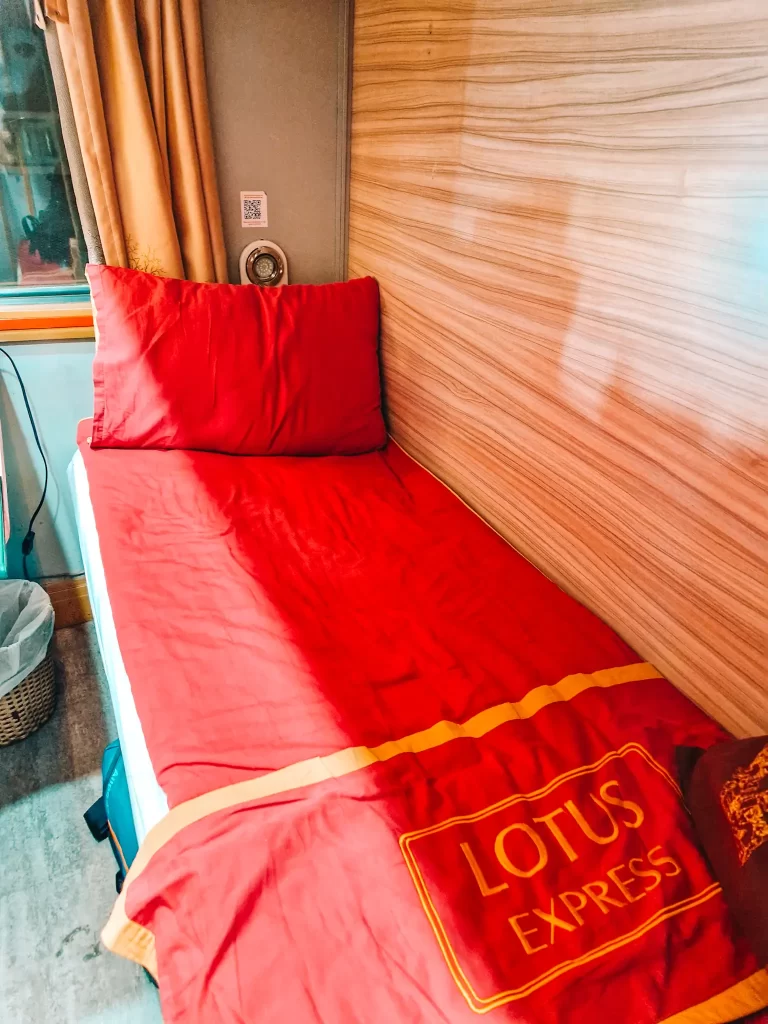
Why Take an Overnight Sleeper Train in Vietnam
As a long, thin country, Vietnam is uniquely suited to these long-distance train rides. The train line stretches from Ho Chi Minh City in the south up to the capital Hanoi in the north. It continues on to Lao Cai, the nearest major city to Sapa, where you can find Mount Fansipan, the highest peak in Indochina.
However, taking the train in Vietnam isn’t always straightforward! This travel guide will take you through how to make the most of the amazing experience of Vietnam overnight trains. I’ll talk through the different types of train and berth available, how to get food, what the toilet situation is like and how I chose the trains I did. I’ll also talk through my experiences on the routes I used for Vietnam overnight trains. Finally, I’ll give a verdict on whether each one was worth it!
History of Vietnam’s railway
The train line, known as the Reunification Express, was first built by French colonialists in 1881. It played a major role in the Vietnam War, and was heavily damaged. It was restored in 1976 after the fall of Saigon. The railway was promoted as a symbol of Vietnamese unity as the north and south of Vietnam were joined together.
When I visited Vietnam in back in 2010, travelling by Vietnamese rail carriages was uncomfortable and not recommended! The journey was considered long and deeply uncomfortable. However, nearly 15 years later, it couldn’t be more different, at least in terms of luxury. It’s still very long!
Best Sleeper Train Routes in Vietnam: My Experiences
Da Nang to Ninh Binh (or Hanoi) on the Lotus Express
I chose the Lotus Express for my first Vietnam sleeper train, because it has lots of positive reviews, and I’d seen lots of detailed videos and blogs talking about the experience.
Boarding
You board the train at around 5.30pm at Da Nang’s railway station (about 30 minutes before departure). Da Nang is about a 40 minute drive from Hoi An, making it the main train station for both cities. There is a shop just outside where you can buy any snacks you want before you enter.
I was in a four berth cabin and was joined by two women, and we were told that there wouldn’t be a fourth person. Although it wasn’t possible to specify when booking, I was lucky to get a bottom bunk.
The cabin
The cabin was clean, with the signature Lotus Express bedding. It’s not as shiny as it once was – to be honest, it felt like it needed a bit of an upgrade. The walls were a bit scratched, and the bedding felt faded.
There is a bit of space under the bottom bunks to put backpacks, and some space above the top bunk as well. With a more square backpack, I struggled to get mine under, and once there were 3 of us in the cabin it felt very crowded with luggage!
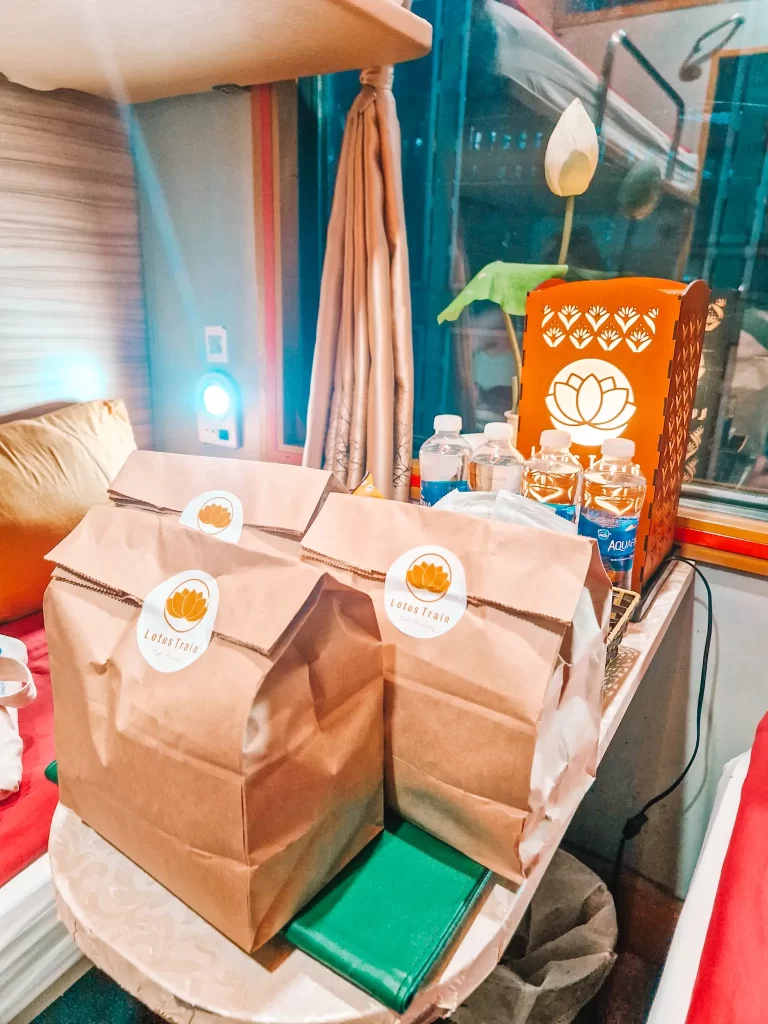
We found excellent snacks on our table – the breakfast bags were really substantial and there were a lot of other snacks as well. There was a reading light and a socket on each bunk, and a socket below the middle table as well.
The beds were as comfortable as any narrow bed on a train is going to get, and the bedding was clean. However, the train itself is extremely noisy! Bring earplugs if you have them. We were also woken up at around 7am by the coffee cart going past and banging on all the doors!
Private cabin on Vietnam sleeper trains
While I had a lovely chat with the two women, I ended up getting really lucky and having a private cabin to myself. The carriage wasn’t full, and after departure the steward came around and offered a cash upgrade. This was around £15 and I jumped at the opportunity – it would’ve cost around £150/180e/$190 on top of my single ticket to book the two berth cabin up front.
Top tip: if you are interested in having the VIP/2 berth cabin, but not sure: wait and see if an upgrade is available after departure, as this will be much cheaper!
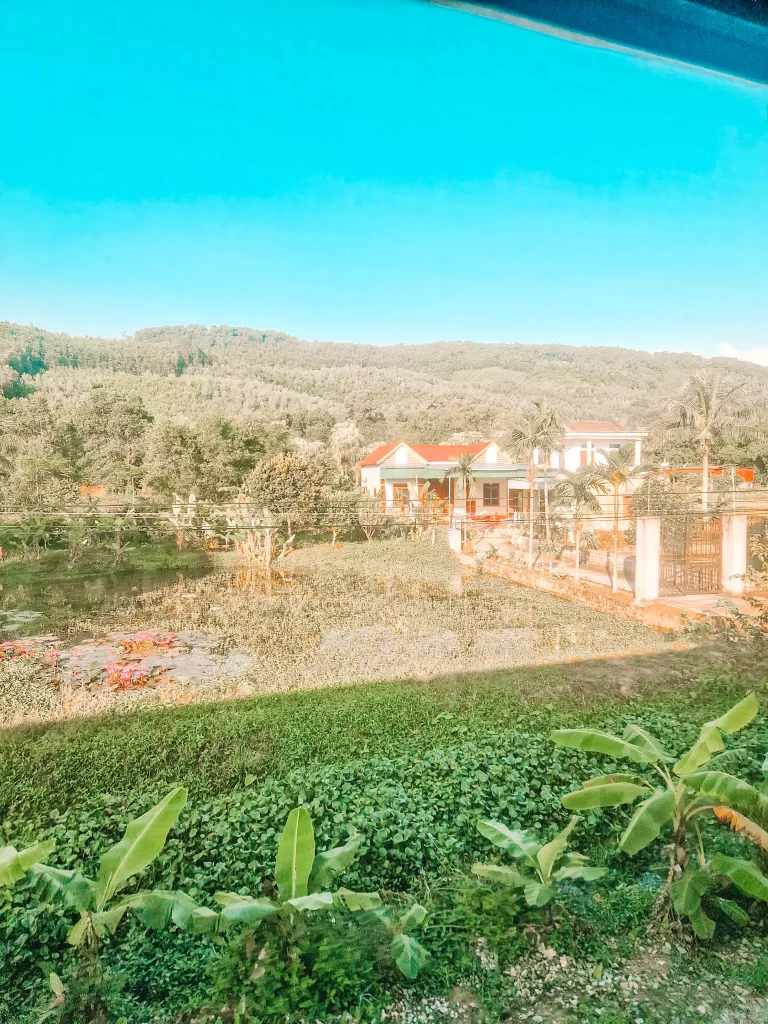
My Verdict on the overnight train between Da Nang and Hanoi
I had a great experience on this trip. The journey time was long, but this meant that there was time to settle in and enjoy the experience. It’s dark when you leave, but once you wake up you get to watch the beautiful scenery of north Vietnam going past. There’s plenty of time to wash your face and teeth and have breakfast without feeling rushed, and it arrives at a reasonable time. I was lucky and my hotel room was ready when I arrived at about 10.30am. If you’re continuing to Hanoi, it’s another two hours after Ninh Binh.
A Luxury Overnight Train in Vietnam: From Hanoi to Sapa
I chose the Chapa Express as it had excellent reviews, and was less expensive than the top reviewed company (VicSapa). While I didn’t get to use it, one of the key selling points for the Chapa Express is their lounge at Lao Cai station – if you are travelling from Sapa to Hanoi, this gives you the opportunity to shower before boarding.
Top tip: Booking the Chapa Express can feel confusing. The cheapest option on their website doesn’t guarantee you a bed in one of their carriages, but in one of their sister company carriages, which are lower quality. If you want a guarateed bed on the Chapa Express carriage, you need to book the Deluxe Cabin.
Boarding
The Chapa Express boarded at about 9.30pm. I was once again with a group – 3 siblings this time. We were lucky that they were on an organised tour so only had their overnight bags rather than their big packs – this made the full cabin much less crowded.
The cabin
In contrast to the dated Lotus Express, the Chapa Express was stunningly beautiful. It felt luxurious, with cabins decorated in fabrics made by local ethnic groups living around Sapa. Even the walls were beautiful fabric!
I was in a four bed berth in their ‘Deluxe Cabin’, and it was stunning. But I also got to peek into their newer luxury cabins, which are ‘Premium Cabins’ – these took things to a really first class experience and truly felt like a boutique hotel. I snuck in to use their even nicer toilets a couple of times…!
This train was much more popular and all the cabins in my carriage were full. It was very busy to start off, as everyone wanted to get settled as soon as possible before going to sleep – I had to wait for the toilet and sinks a few times.
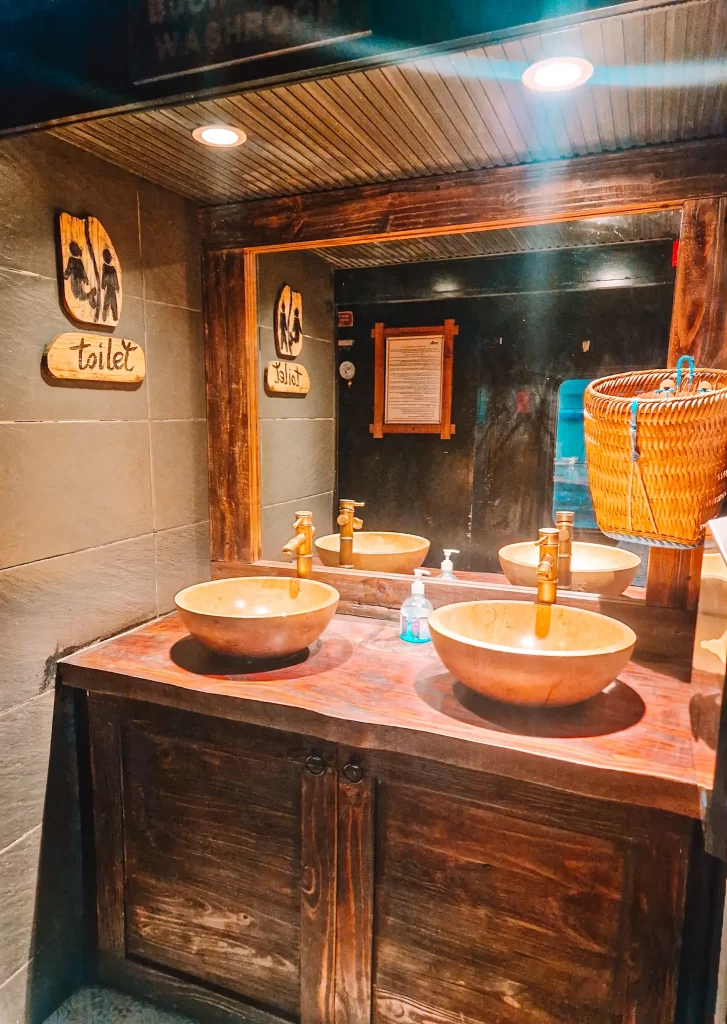
Once we’d departed, we got to go past Hanoi’s famous Train Street, which was a real experience having sat there for a coffee the day before! There was also the chance to get a tea or a coffee from the cart, or to pre-order for the morning.
The sleeping experience
My cabin settled down to sleep fairly quickly, given that the journey was only six hours. Again, I was lucky to have a bottom bunk and the bedding was much nicer than on the Lotus Express. I tried the complimentary earplugs but they didn’t work for me (or anyone else in my cabin) so I quickly switched to my own and fell asleep.
We woke up early at around 5am. It then got very busy as the full carriage wanted to go to the bathroom, wash teeth and faces and get ready. We tucked into the breakfast and my pre-ordered coffee arrived. Given the time of the morning, the scenery was much less spectacular as it was still quite misty out, but we did get to see a bit of countryside before arriving at Lao Cai station.
Arrival
Lao Cai is about a 45 minute drive from Sapa itself. I had pre-booked a transfer with Chapa Express, and like almost everyone else I got into a minivan and settled in for the winding journey. However, there was also a local bus that you could take for a lot less money (and a lot less comfort)
My Verdict on the Vietnam sleeper train from Hanoi to Sapa
The level of luxury on the Chapa Express was so much higher than on the Lotus Express, and made this a really special experience. However, I’m not sure I’d do it again – the short journey time meant I didn’t get enough sleep. We arrived in Sapa at around 7.30am and my hotel room wasn’t ready until midday – I was so tired I felt like I lost most of the day anyway as there’s not much to do so early in the morning.
If I was going to do this journey again, I’d do what I did on the way back: take a comfortable VIP bus either early or late in the day so that I still had some time in my chosen city, but slept in my bed rather than on the train. The bus is also significantly cheaper. However, if you function better on limited sleep than I do, this journey is certainly an incredible experience.
My Experience on a Vietnam Rail train during the day
I recently took a train during the day from Da Nang to Hue (and did the reverse journey as an Easyrider tour of the Hai Van Pass). While you can visit Hue on a day trip from Da Nang or Hoi An, the relatively long journey time means that spending the night in Hue is better. The journey started at 10.30am and took about 3 hours. I chose the First Class Sleeper seat – it was £2 more expensive than the Second Class Seater and £1 more than Second Class Sleeper.
I had the chance to walk through the Second Class Sleeper carriage while boarding and definitely don’t recommend this. Cramming 6 bunks into the space made it cramped and dark, with no option to sit up in your bunk.
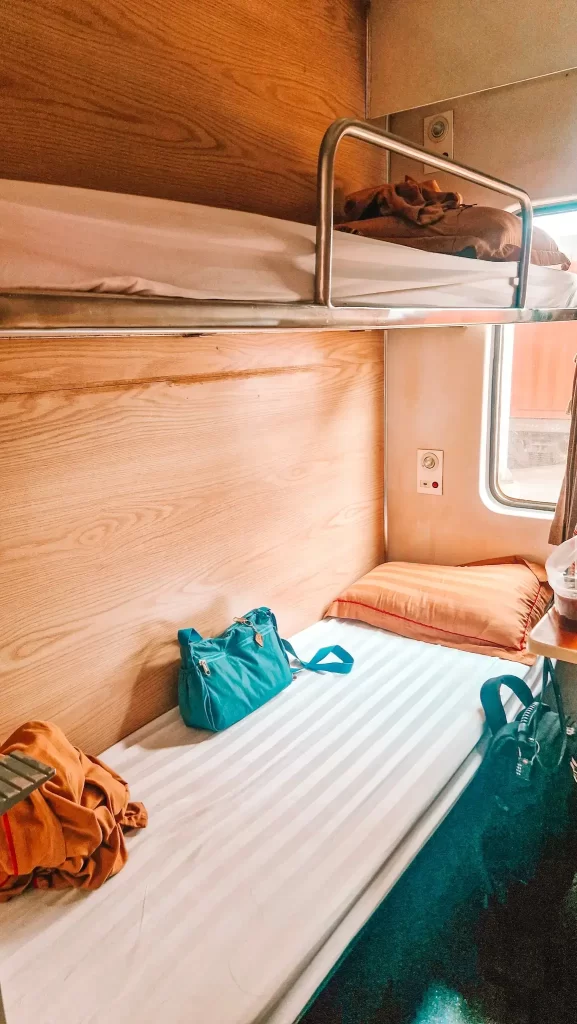
The First Class Sleeper was very similar to the carriages on Private Trains like the Lotus Express and Chapa Express in terms of layout. However, it was less clean – possibly because another passenger was sitting on my bed before I got on. There are also no snacks or water provided.
I was only on this train for 3.5 hours, but that felt like enough! The beds are not comfortable for daytime use. It’s difficult to sit in them and also look out of the window, and as I had a bottom bunk, the Vietnamese couple who had the upper bunks kept trying to sit on my bed!
Types of Vietnam Sleeper Trains
Vietnam’s rail system is different to trains in other parts of Asia, for example the trains I took from Yogyakarta to Malang in Indonesia, from Ipoh to Kuala Lumpur in Malaysia, or from Bangkok to the south of Thailand, all of which are entirely state run. In contrast, Vietnam’s rail system has two types of carriage:
Carriages run by Vietnam Rail as part of the Reunification Express
These offer a number of different seat/berth types, but are understood to offer lower quality than the alternative private carriages.
Luxury carriages run by private companies
These are attached to the existing Vietnam Rail carriages, and therefore run on the same timetable. However, they are run by private companies and generally offer a higher standard of travel, with some offering real luxury. It’s worth noting though that there are differences in quality between the private companies for Vietnam sleeper trains. You should do your research on which is right for you.
Cabin Types and Comfort Levels
There are a number of different options when it comes to ticket types on Vietnam’s railways.
Vietnam rail
- Hard seat – a wooden seat
- Soft seat – a typical leather train seat, with 2 seats together on either side of an aisle
- Hard sleeper or 2nd Class Overnight Train – a 6 berth sleeper cabin, with 3 bunks on either side of the cabin
- Soft sleeper or 1st Class Overnight Train – a 4 berth sleeper cabin, which is more comfortable than a hard berth e.g. softer mattress. I recently used this on a short journey from Da Nang to Hue
Private companies
Through luck, I ended up staying in both a 4 berth and 2 berth cabin!
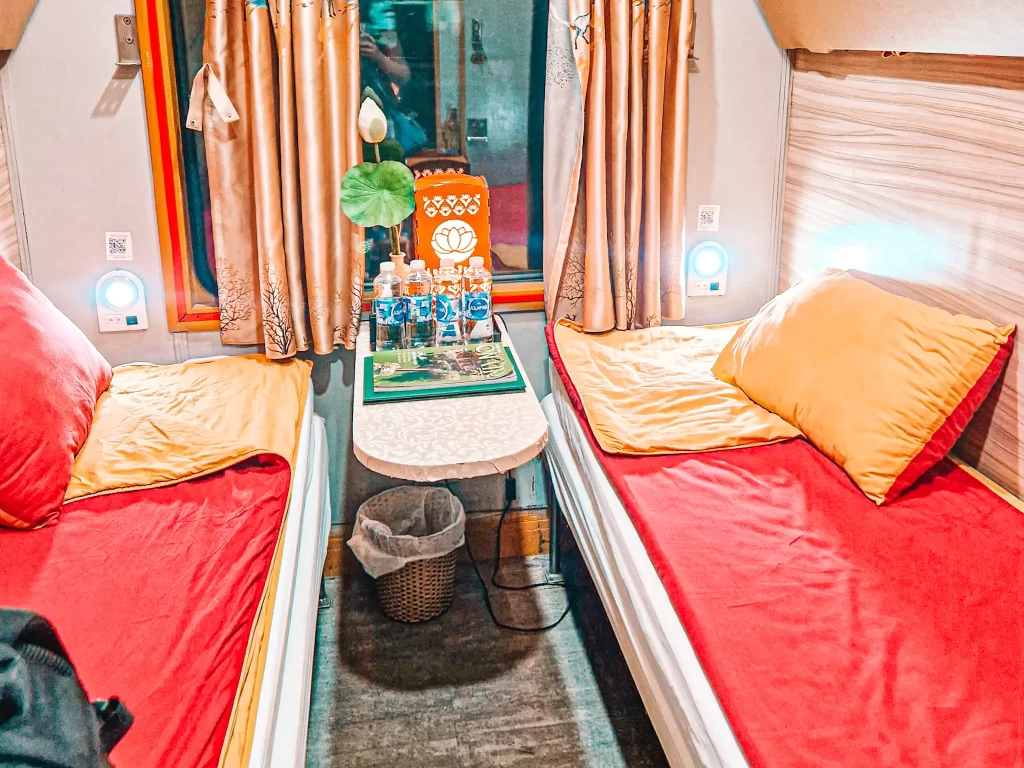
- 4 berth cabin – similar to a Vietnam Rail soft sleeper, these have two bunks on either side of the cabin. There will be a small table in the middle. There is limited space under the bottom bunks for luggage and some space above the door as well. They have pillows and duvets, power sockets for each bunk and usually nightlights on each bunk. There is a fold-down step to help you get to the top bunk, but it’s still a bit of a struggle.
- 2 berth cabins – these vary across the companies, but are primarily the same cabin as the 4 berth but with the two top bunks folded back. This gives a lot more space and light, and in my experience meant that the aircon was more efficient. To book this cabin, you have to book both bunks even if you are a solo traveller.
- VIP cabins or First Class Overnight Trains in Vietnam – Some of trains going up to Sapa also offer other cabin types, including VIP or luxury cabins that have better décor and amenities. For example, the Chapa Express offered Suite Cabins, which only had two bunks (rather than the top bunks folded back). They also had their new Premium Cabin, which I got to peek into when I got chatting to one of the people staying in it. It’s even more beautiful than the regular Chapa Express, with crisp luxurious white linens, better mattresses and an even more spacious toilet. This is a really first-class experience!
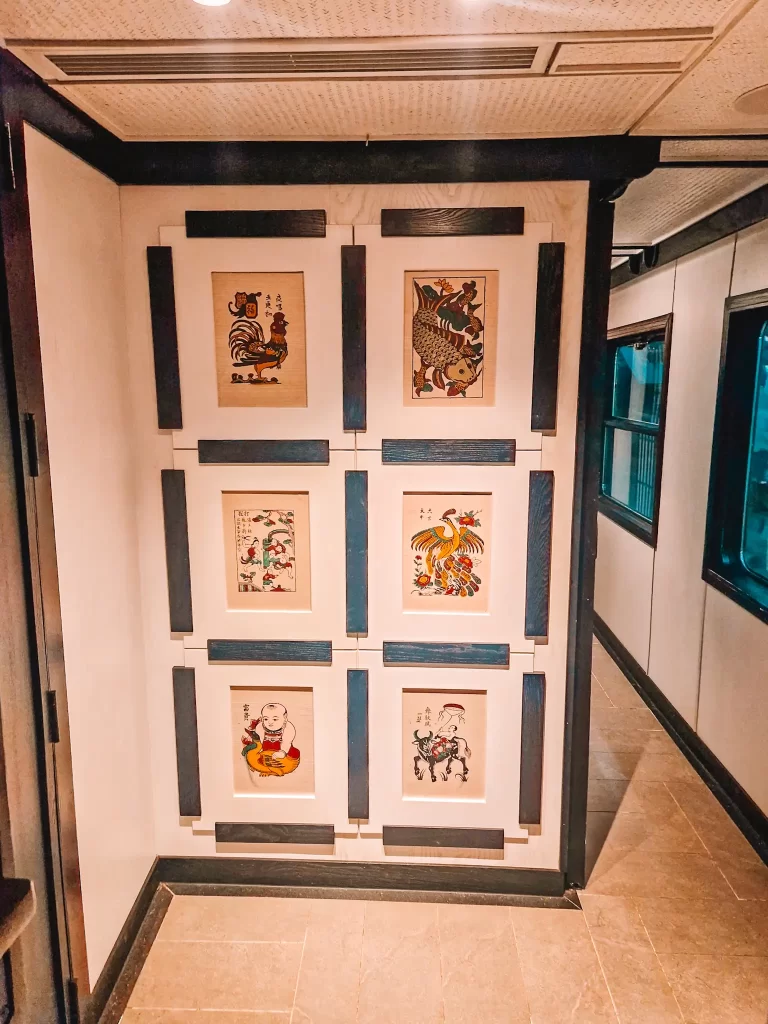
What to expect on board
Toilets and Hygiene
All the private carriages on Vietnam overnight trains have fairly luxurious western style toilets. That means a proper ceramic toilet, unlike the nasty metal ones often found on UK trains. There were toilet cubicles at either end of each carriage.
There were also luxurious sinks on both trains I took. Rather than having a sink in the toilet cubicle, these were separated out to allow more space for people to e.g. wash faces, brush teeth before settling down for the night. They both had hand soap.
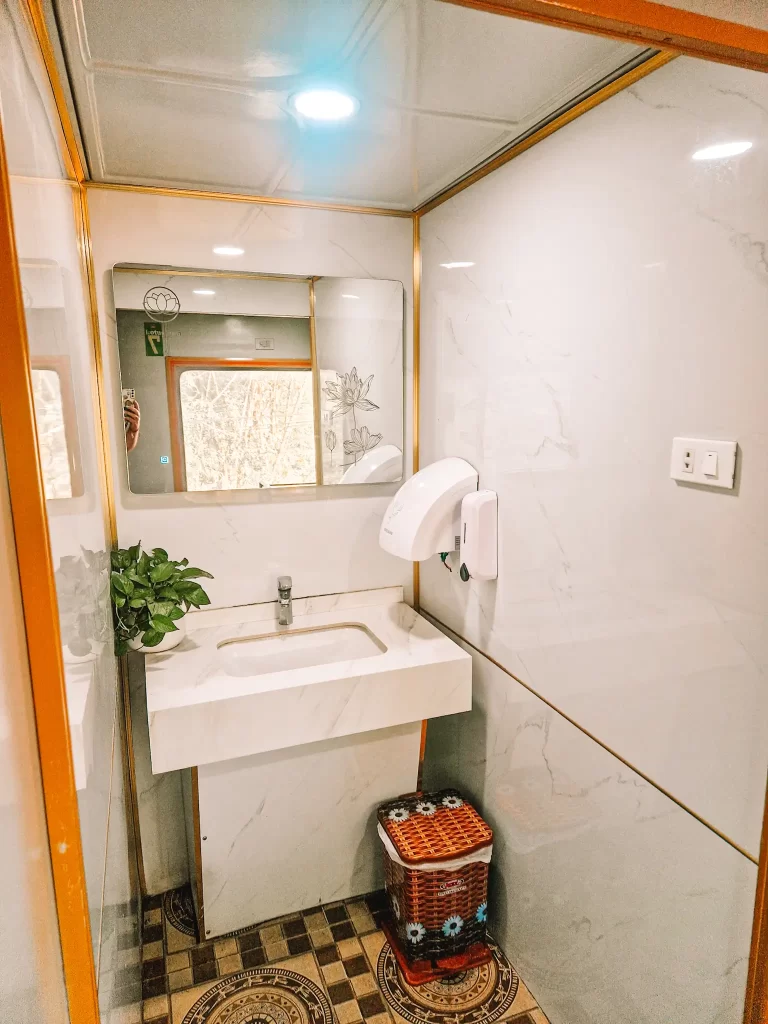
If you are taking the Vietnam Rail carriages, the toilet situation is likely to be a bit more hit and miss. In First Class, there were clean Western-style toilets with toilet roll in each carriage. However, I can’t confirm this for the other carriage types.
Top tip: bring toilet paper. While both trains I took had this to start, it had run out by the end of the journey (and after about an hour on the Lotus Express. It wasn’t replaced on either train, which felt like a weird oversight compared to the otherwise luxury experience.
Food and Drink
Let’s face it, you’re going to be on your Vietnam sleeper trains for a while. Especially if you’re travelling on the Hanoi-Da Nang route! It’s going to be difficult to carry enough food and water for a 19 hour journey, so it’s important to know what your onboard options are.
Both the Chapa Express and Lotus Express offered snack bags in the cabins on arrival. For the Lotus Express, these were fairly substantial: there was a breakfast bag (see picture below) and about 3 different types of snack on the table. They also provided a bottle of water for each person, with more available from the steward, and offered free beer.
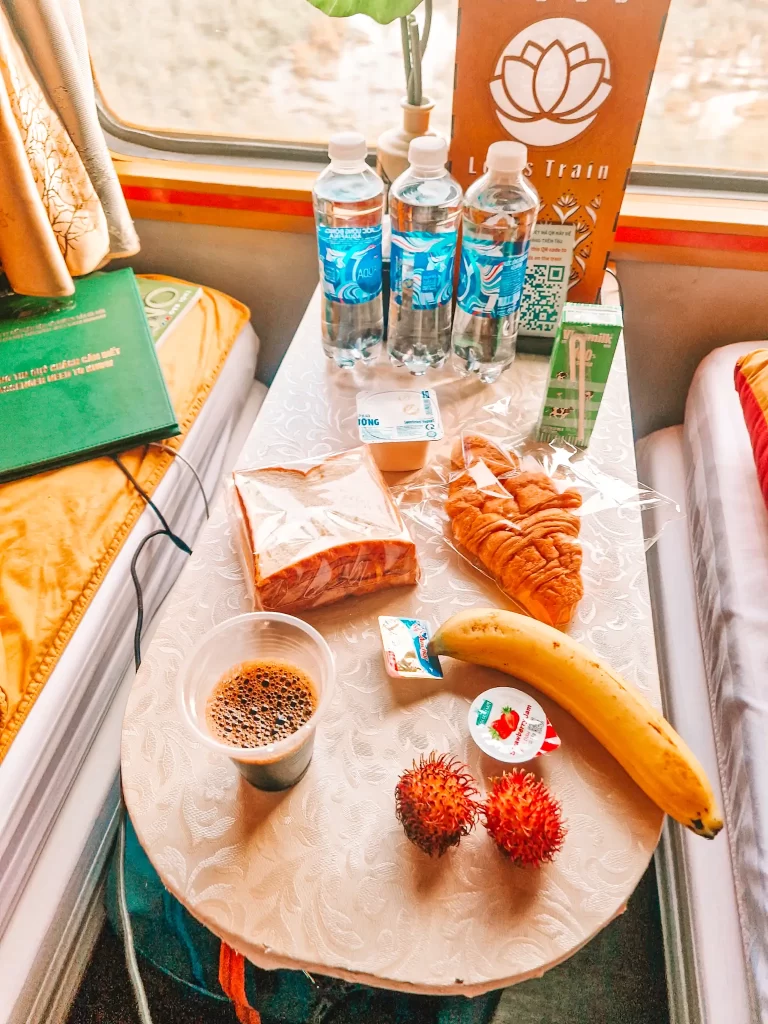
The Chapa Express was a shorter journey, and therefore offered a little less. We had a couple of snacks on the table, and a banana and croissant. They also provided water.
The Vietnam sleeper trains also have a cart that comes around offering coffee and tea. These arrived in the evening and first thing in the morning on the Lotus Express. On the Chapa Express the cart came by after departure, and the steward took coffee orders for the morning given that the journey was much shorter.
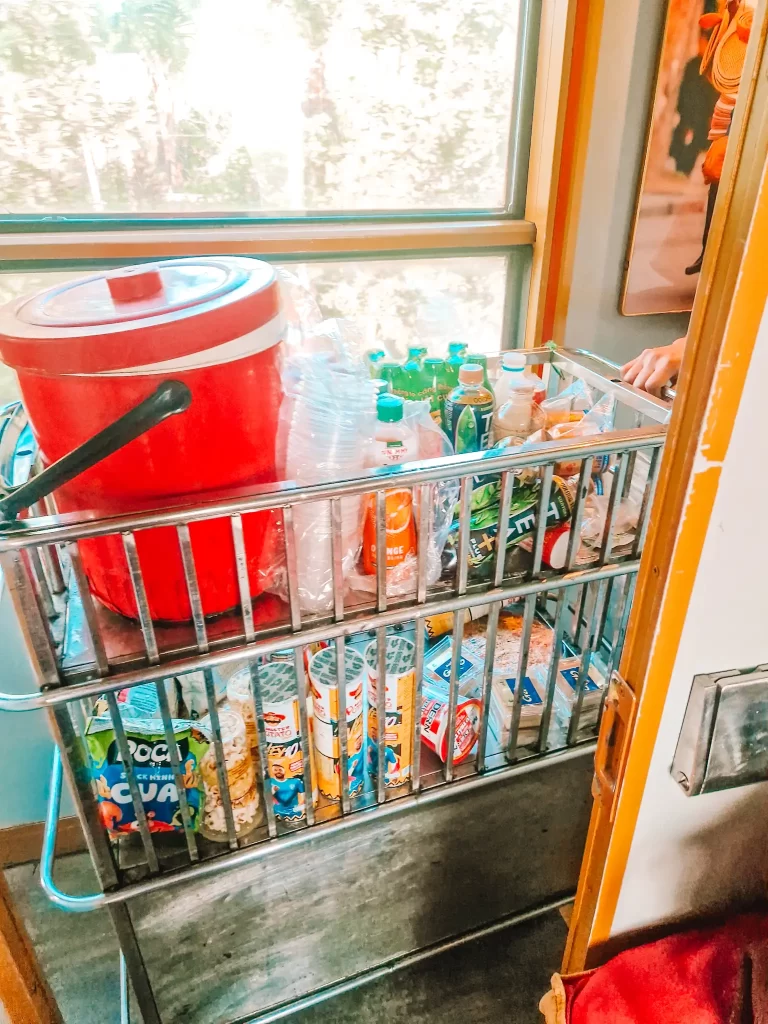
The Lotus Express also had a dinner cart, which came by offering a menu of rice and typical Vietnamese food.
When I was on the Vietnam Rail train from Da Nang to Hue, a food cart also came around. In addition, there was a long stop at Da Nang (around 15 minutes) so many passengers who had got on earlier in the journey (for example in Ho Chi Minh City) got off to buy snacks in the station.
Safety Tips on Vietnam Sleeper Trains
I felt very safe on my Vietnam overnight trains. If you are lucky enough to get a private cabin, these lock from the inside, making it feel very secure.
I also felt safe in my shared cabin as a solo female traveller. The train was very busy and the conductors/staff are very present. In both my trains, they slept in a small cabin at the end of the carriage. If you ever feel unsafe, a staff member is always nearby.
The British Foreign, Commonwealth & Development Office (FDCO) warns that there are thefts on overnight trains. It’s best to bring a padlock for your bags and make sure they are locked overnight, and keep items like your phone in the bed with you. If security is a concern, opt for an upper bunk—it’s less comfortable but safer, with a storage area near the ceiling.
Frequently Asked Questions
How long is the journey on Vietnam overnight trains
This obviously depends on the route! For the most popular routes for Vietnam overnight trains:
✓ The Hanoi – Da Nang train is around 17 hours.
✓ The Ninh Binh – Da Nang train is around 15 hours
✓ The Hanoi – Sapa train is around 6 hours
✓ The Ho Chi Minh City – Da Nang train is around 19 hours
✓ The Da Nang – Hue train is about 3.5 hours
What is the timetable and how frequent are the trains?
The reality is that the timetable is pretty sparse. There are usually only a couple of departures each day for Vietnam overnight trains. In most cases, only one of them will offer good timings (not arriving in the middle of the night, for example).
The timings I would recommend are:
✓ Da Nang – Hanoi – 18.05 to 11.46 (SE20)
✓ Hanoi – Da Nang – 19.20 to 11.33 (SE3)
✓ Hanoi – Sapa – 22.00 to 6.10 (SP3)
✓ Sapa – Hanoi
✓ Ho Chi Minh – Da Nang – 19.00 to 12.42 (SE4)
✓ Da Nang – Ho Chi Minh – 12.47 – 6.50am (SE1)
You can find all Vietnam overnight trains on this helpful train timings website. For each route, it will show multiple departures at the same time. This shows you which private companies are also running carriages on this route (e.g. Chapa Express, Lotus Express).
How to book luxury trains in Vietnam
There are two primary ways to buy tickets for an overnight train in Vietnam:
✓ Book directly with the private train company via their website. This is what I did for both the Lotus Express and Chapa Express and I had no problems with the websites.
✓ Book via an agency like 12goasia – they offer tickets for most private companies and berth types
How to choose which private company to use for Vietnam Sleeper Trains
For the routes from Da Nang (best for Hoi An) to Hanoi, and Hanoi to Sapa, there are many private companies running train carriages attached to the Vietnam Rail trains, and choosing the right one can feel really overwhelming!
The private companies differ in quality and price, and ultimately you’ll need to work out the right balance for you.
I read lots of reviews before I chose my companies, including on 12goAsia, Trip Advisor and Google, and I also watched videos on Instagram and Tiktok. Blogs with people’s detailed experiences were also really useful.
I ended up settling on the Lotus Express for my trip from Da Nang to Ninh Binh (the route which continues to Hanoi) and the Chapa Express for Hanoi to Sapa.
Top tip: When I looked into reviews of Vietnam sleeper trains, many companies had really bad reviews. But when I looked a bit deeper, many of them related to the motion of the train. This is obviously out of the control of the private company, because it relates to the tracks themselves. Once I realised this, it became easier to ignore what initially looked like very poor reviews.
Packing list for Vietnam overnight trains
✓ Small change if you want to buy any coffee or snacks onboard
✓ Passport and Train Ticket (printed or digital)
✓ Snacks and Extra Water
✓ Earplugs and Eye Mask
✓ Light Jacket or Blanket (trains can be cold)
✓ Small Lock for Luggage
✓ Toilet Paper and Hand Sanitizer
Is it Worth it? Final Verdict
I loved my trip from Da Nang – Ninh Binh on the overnight train. This train wasn’t quite as luxurious as the train from Hanoi to Sapa, but offered a good level of comfort, and the length of the journey gave you enough time to settle in, eat dinner and breakfast, and enjoy the views as well as getting a good night’s sleep. I think this is a good way to get from central Vietnam to the north.
While I loved the luxury of taking the Chapa Express from Hanoi to Sapa, the relatively short journey time meant that I didn’t get enough sleep. I’d personally recommend doing a very early or very late day bus rather than spending the money on a 6 hour train journey. However, if you function well on little sleep, this could be a great option for you!
I would only recommend taking the train during the day for short journeys! Even in first class, a 16-hour journey to Hanoi or even longer to Ho Chi Minh City would feel interminable.
So there you have it, all the tips and tricks you need to know for an unforgettable journey on Vietnam sleeper trains. From the stunning scenery outside your window to the cozy comfort of your bunk bed, traveling by train in Vietnam is sure to be an exciting adventure. So pack your bags, grab a snack from the dining car, and get ready to experience the beauty and excitement that only a sleeper train in Vietnam can offer. Happy travels!

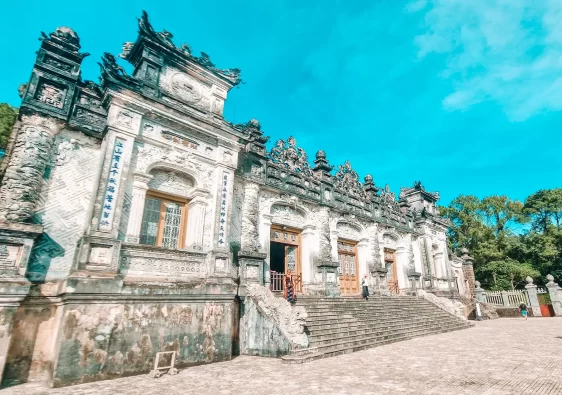
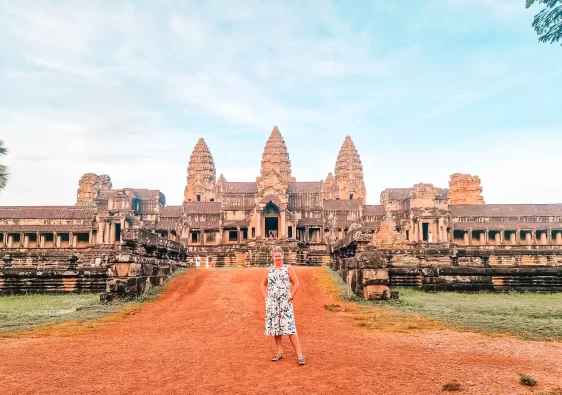

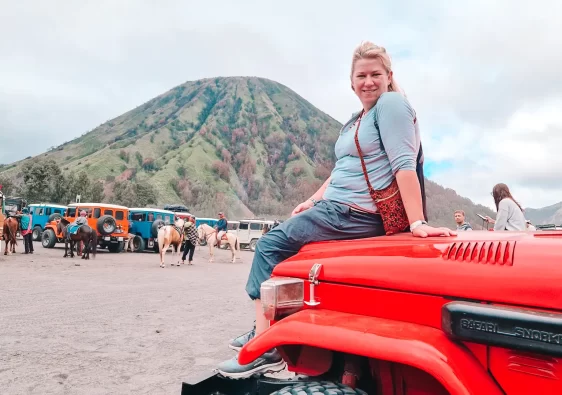
Thanks for sharing such a detailed account. So interesting that they have a private/public mix on each train departure. Was there a dining car or just the small cart?
Really helpful and detailed — I’ve been curious about sleeper trains in Vietnam, and this answered a lot of my questions. Appreciate the tips!
Wow! I had no idea Vietnam’s train rides could be so long. At 19 hours, I’m definitely taking a plane. However, I understand the desire to save a night’s accommodation and sleep on the train for a unique experience. And I’m glad to see that the bathrooms are better than expected.
I had never considered taking overnight trains, but I will definitely check them out when travelling in Asia! These look quite good, and your tips were super helpful.
The sleeper trains sound like a good option to taking a flight (or a bus). The Chapa train looks the best, because of it being newer. However I would also not function that well on not a lot of sleep, but a bus might be more cramped.